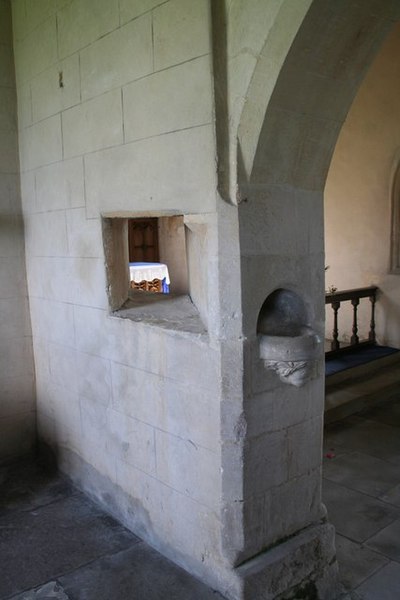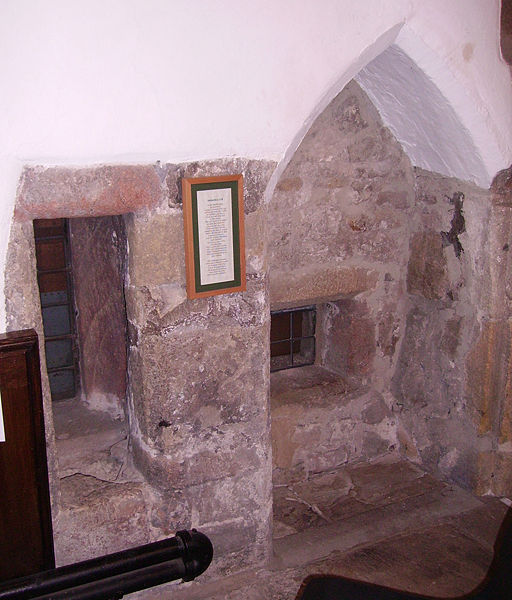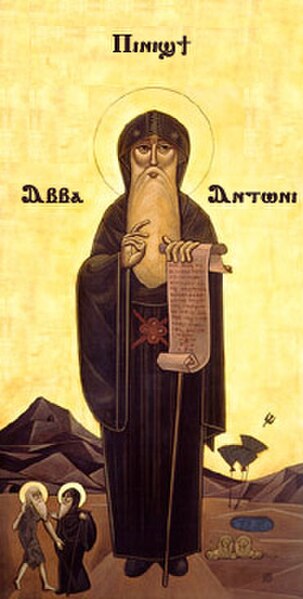A hagioscope or squint is an architectural term denoting a small splayed opening or tunnel at seated eye-level, through an internal masonry dividing wall of a church in an oblique direction, giving worshippers a view of the altar and therefore of the elevation of the host. Where worshippers were separated from the high altar not by a solid wall of masonry but by a transparent parclose screen, a hagioscope was not required as a good view of the high altar was available to all within the sectioned-off area concerned. Where a squint was made in an external wall so that lepers and other non-desirables could see the service without coming into contact with the rest of the populace, they are termed leper windows or lychnoscopes.
Squint in wall of north aisle chapel, St Nicholas's Church, Walcot, Lincolnshire, looking towards south-east, with a view of the high altar in the chancel beyond. To its right is a piscina supported by a carving of a man's head on the jamb of the wall.
The squint at the Church of the Blessed Virgin Mary, Compton Pauncefoot, Somerset
Hagioscope at Olavinlinna in Eastern Finland
Hagioscope, old church of Saint-Maurice, Freyming-Merlebach, Moselle, France
In Christianity, an anchorite or anchoret is someone who, for religious reasons, withdraws from secular society to be able to lead an intensely prayer-orientated, ascetic, or Eucharist-focused life. Anchorites are frequently considered to be a type of hermit, but unlike hermits, they were required to take a vow of stability of place, opting for permanent enclosure in cells often attached to churches. Also unlike hermits, anchorites were subject to a religious rite of consecration that closely resembled the funeral rite, following which they would be considered dead to the world and a type of living saint. Anchorites had a certain autonomy, as they did not answer to any ecclesiastical authority apart from bishops.
Anchorite's cell in Holy Trinity Church, Skipton
Christina Carpenter was walled in to a cell in St James's Church in Shere, Surrey.
The Anchorite (1881), by Teodor Axentowicz
Anthony the Great, father of Christian Monasticism and early anchorite. The Coptic inscription reads ' Ⲡⲓⲛⲓϣϯ Ⲁⲃⲃⲁ Ⲁⲛⲧⲱⲛⲓ' or 'The Great Father Anthony'.








